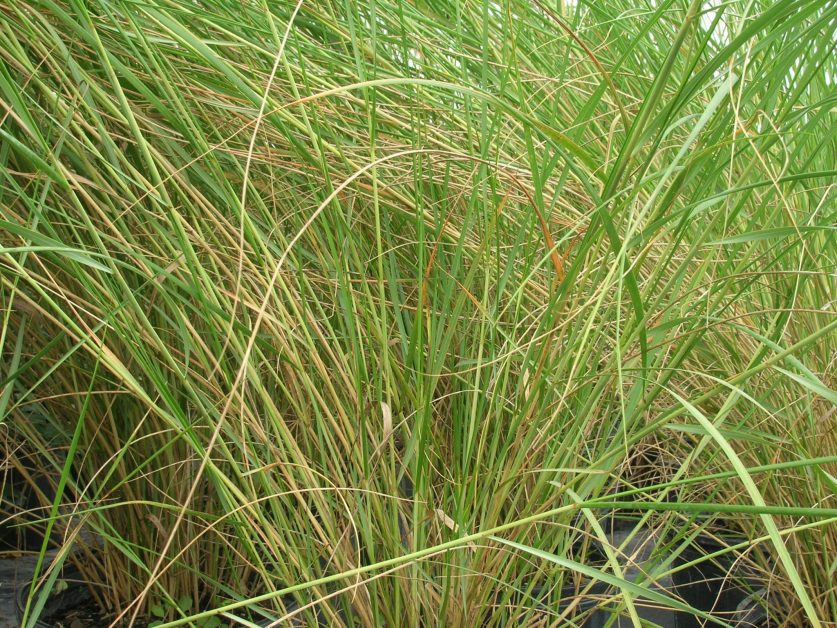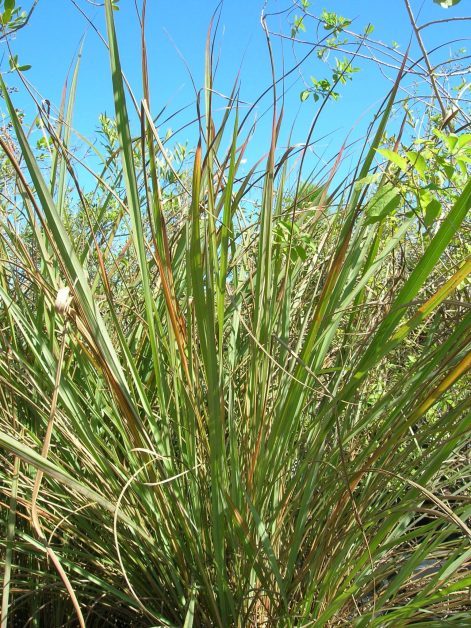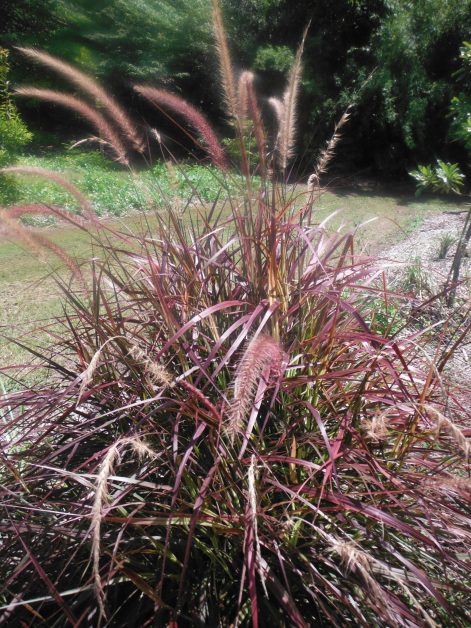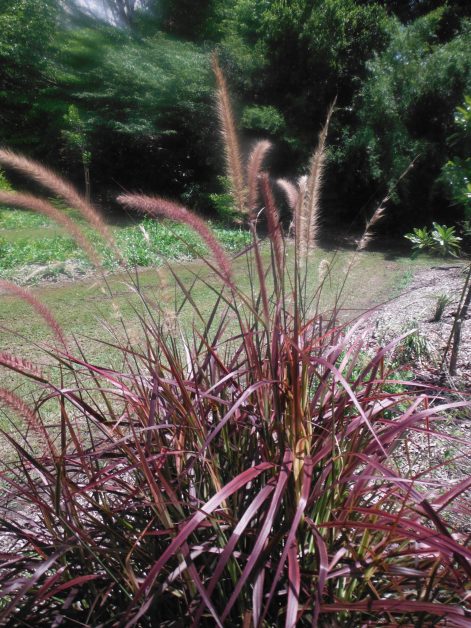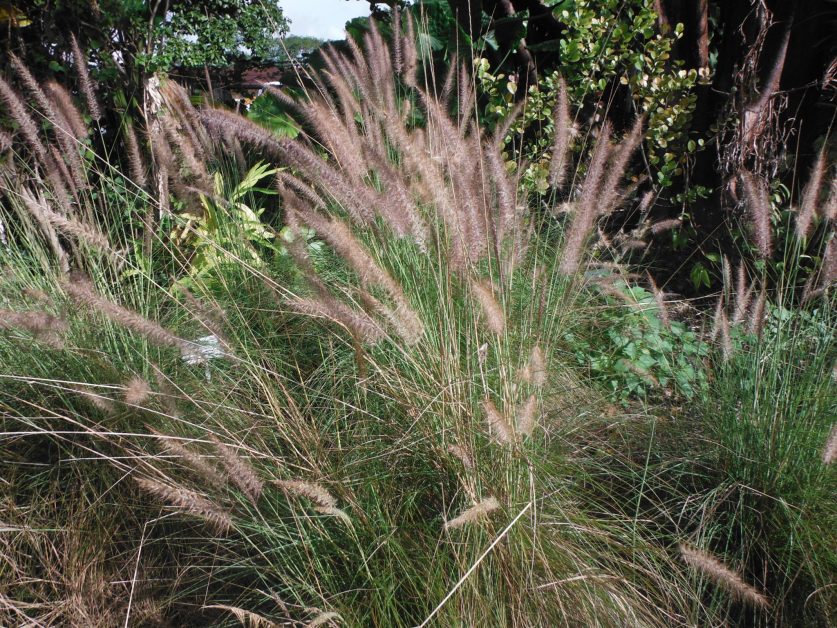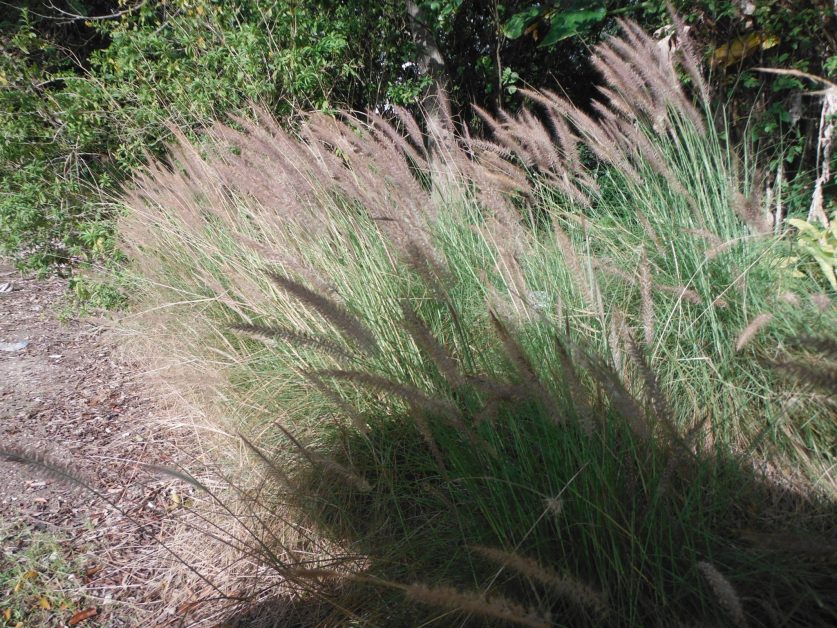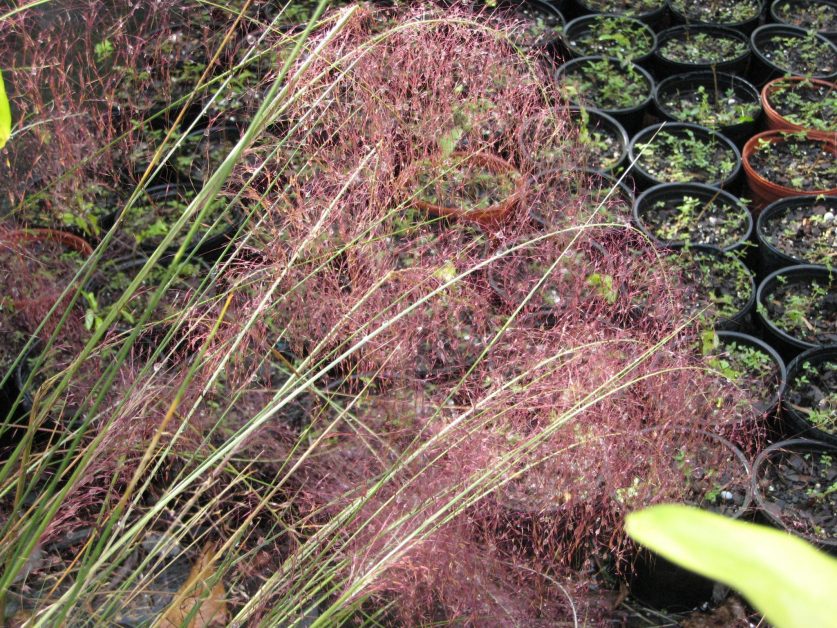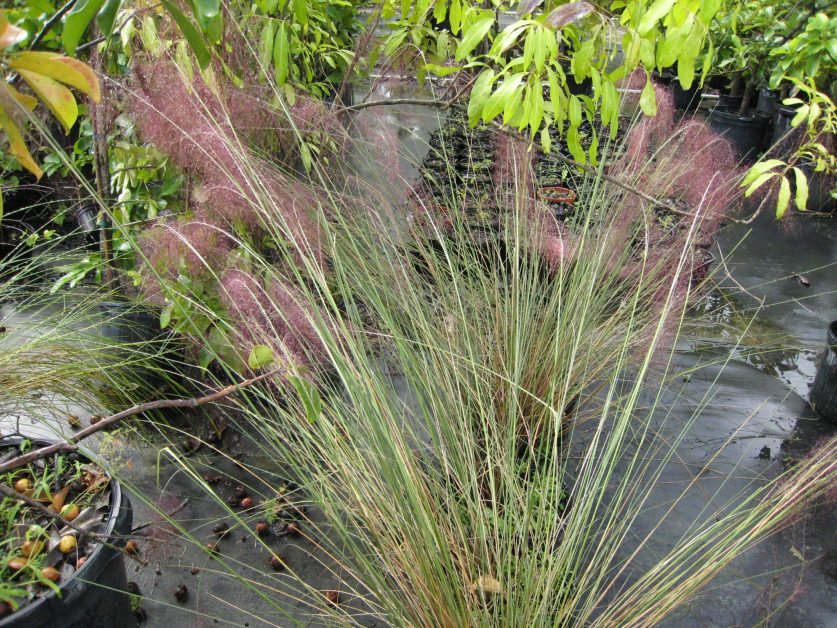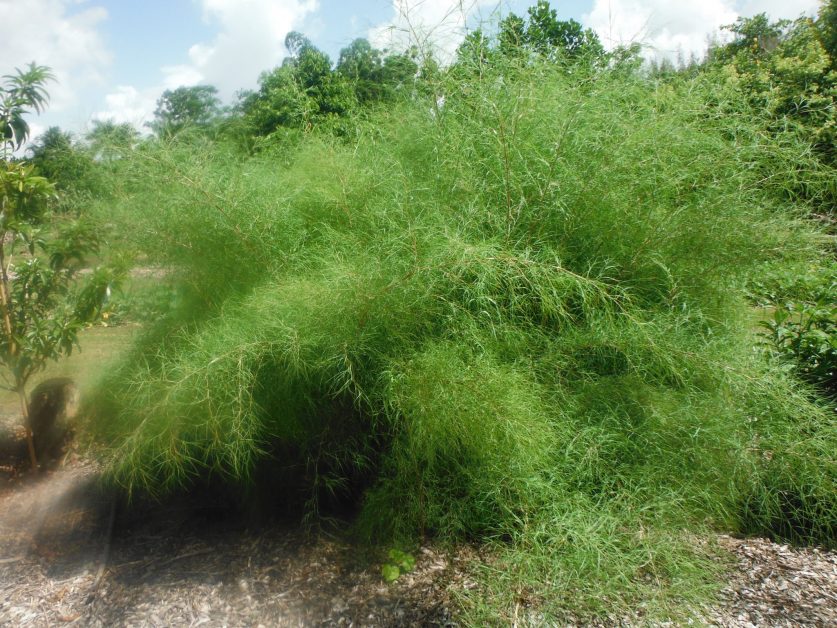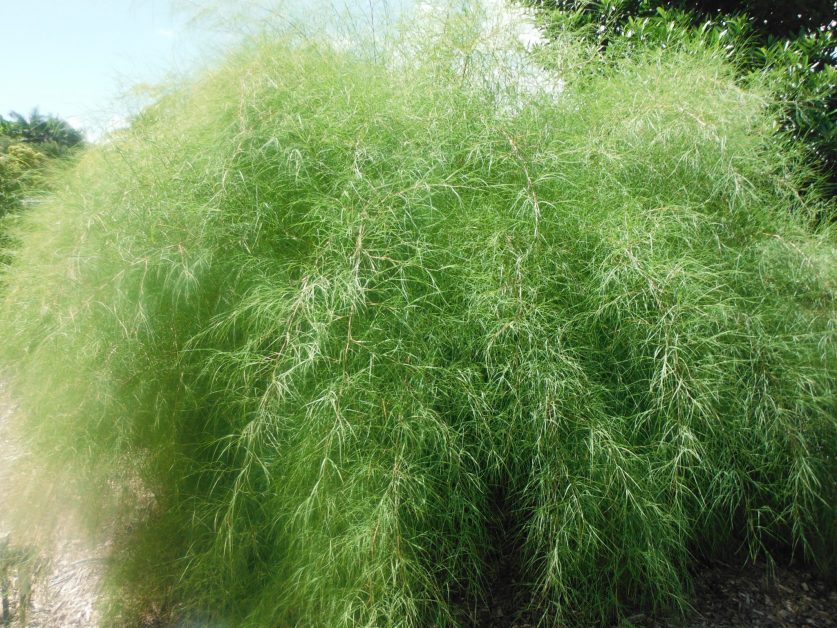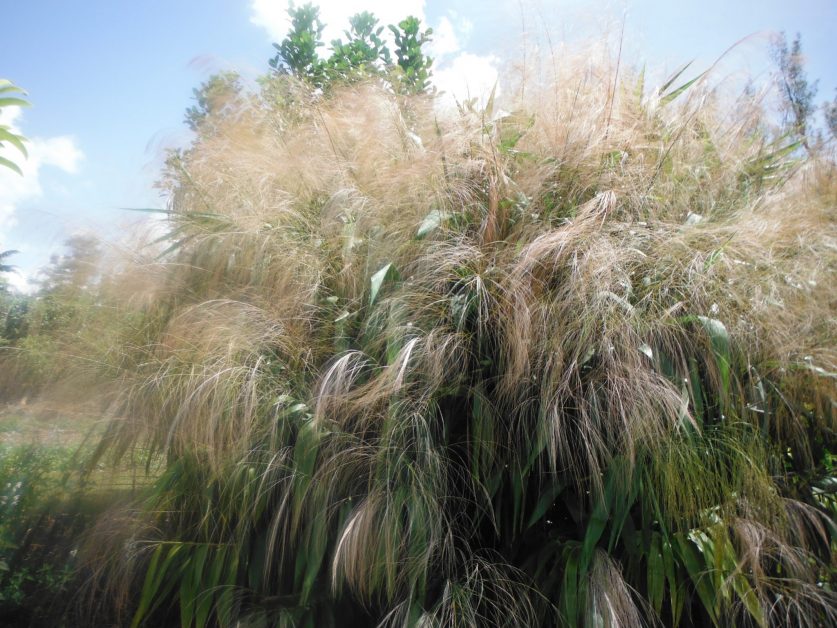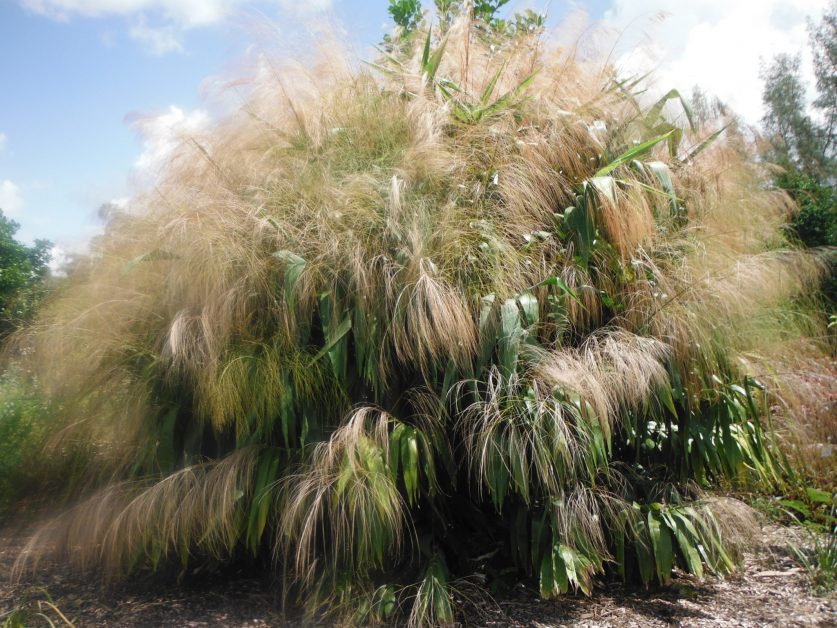We’re High on Grass at Richard Lyons’ Nursery
Ornamental grass, that is, and we’d like to introduce you to some of our favorite species.
Fakahatchee Grass, Tripsacum dactyloides and Dwarf Fakahatchee Grass, Tripsacum floridana: Around most of the world, these grasses are known as Eastern Gamagrass, but folks in Florida prefer to give it a more localized moniker. Native over a large range in the eastern U.S., it’s a bunching grass — distantly related to corn — that grows from 2-10 ft. high. The leaves and stems of Fakahatchee Grass are a purplish color, and flowers are borne on red spikes during the warmer half of the year. This is one tough plant. It prefers moist soils and, in fact, is capable of withstanding periodic flooding, but it can also handle droughts, thanks to its thick, deep-growing rhizomatous roots. T. dactyloides and T. floridana are seldom bothered by diseases or insect pests.
- Tripsacum floridana (Dwarf Fakahatchee Grass)
- Tripsacum dactyloides (Fakahatchee Grass)
Red Fountain Grass, Pennisetum setaceum ‘Cupreum’ and White Fountain Grass, Pennisetum caudatum: Fountain Grass has become so popular as an ornamental plant that hybridizers have developed a number of cultivars. Originally found in a vast Old World range from Africa to Asia, Fountain Grass has now been distributed into many other tropical and subtropical locales. The cultivar called P. setaceum ‘Cupreum,’ also known as ‘Rubrum,’ grows in clumps to a height of 3-4 ft.
- Pennisetum setaceum ‘Rubrum’ (Red Fountain Grass)
- Pennisetum setaceum ‘Rubrum’ (Red Fountain Grass)
- Pennisetum caudatum (White Fountain Grass)
- Pennisetum caudatum (White Fountain Grass)
The Royal Horticultural Society (RHS) of Great Britain has conferred its Award of Garden Merit on Red Fountain Grass, and it’s no wonder. The plant’s strappy, curved leaves are of a reddish hue. The foot-long
inflorescence, colored copper or purple-pink, sits atop a flexible, yard-long flower stalk. For best results, Red Fountain Grass should be grown in full sun on a site that drains extremely well.
Bamboo Muhly, Muhlenbergia dumosa, and Pink Muhly Grass, Muhlenbergia capillaris: These closely-related species not only succeed as stand-alone landscape elements, but they also work well as clumping, tall ground covers. M. dumosa, native to southern Arizona and northwestern Mexico, has lacy, fine-textured foliage and an attractive billowing growth habit It is the taller of the two grasses, reaching 4-6 ft. high. M. capillaris, native over a wide expanse of North America, grows 1-3 ft. high. It is particularly attractive in late summer, when it produces long flower stalks that imbue the plant with a pink to purplish color. M. capillaris is the more drought-tolerant of these species, but both are known for their ease of maintenance.
- Mulenbergia capillaris (Muhly Grass)
- Mulenbergia capillaris (Muhly Grass)
- Muhlenbergia dumosa (Bamboo Muhly Grass)
- Muhlenbergia dumosa (Bamboo Muhly Grass)
Tiger Grass, Thysanolaena maxima: This fast-growing Asian native can be used to great effect where a bamboo-like look is sought in the landscape. Maturing to about 10 ft. in height, T. maxima grows significantly taller than the previously-described grasses, and, while it is successful when grown in full sun, it can also perform well in partially-shaded spots. Its distinctive arrow-shaped leaflets attract a lot of attention, and it tolerates temperatures down into the upper 20s. Tiger Grass functions well as a stand-alone specimen or as a hedge for settings in which a screen or windbreak is desired.
- Thysanolaena maxima (Tiger Grass)
- Thysanolaena maxima (Tiger Grass)
All these species are available at Richard Lyons’ Nursery.
